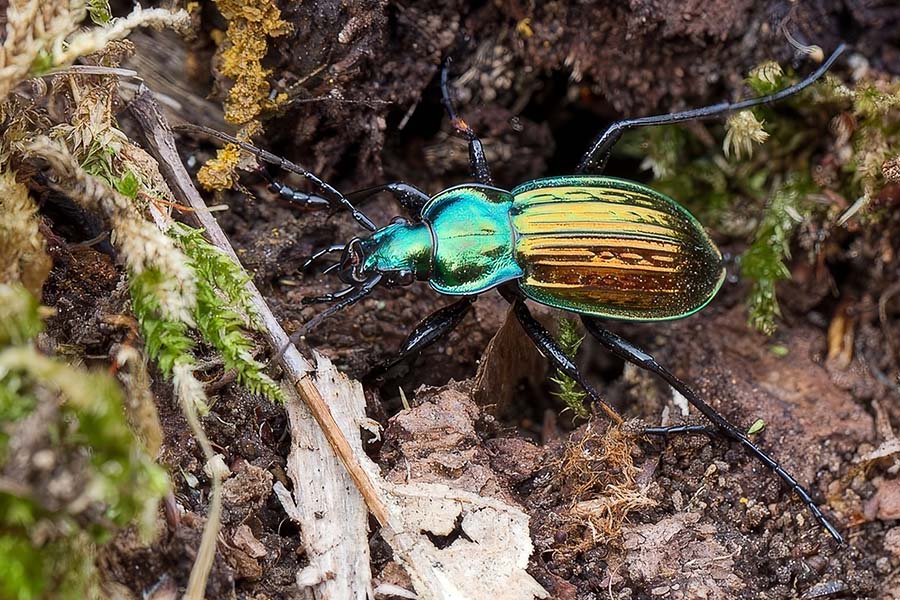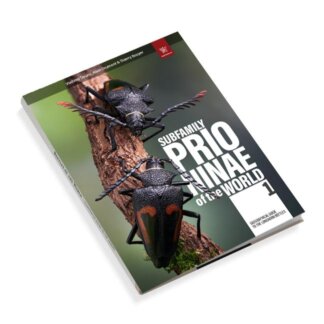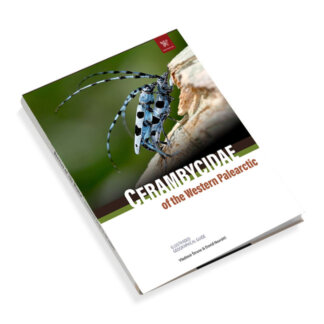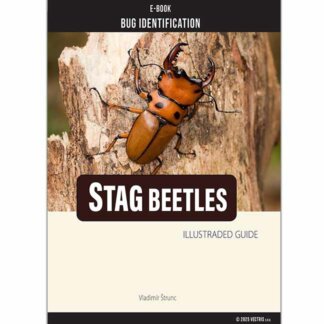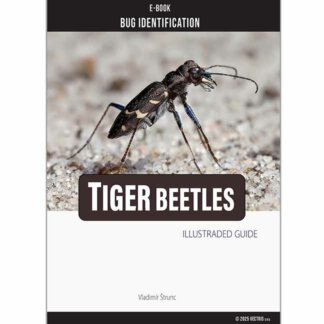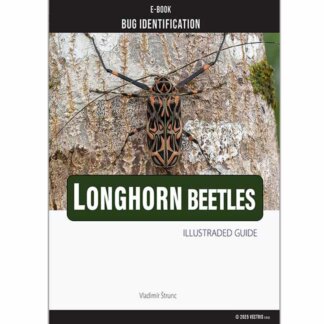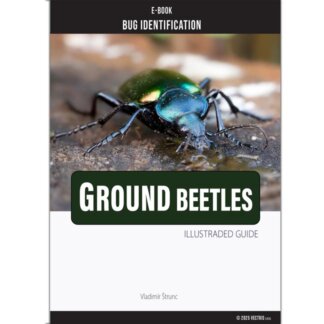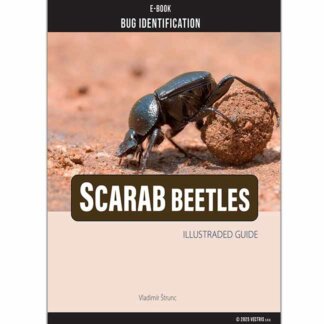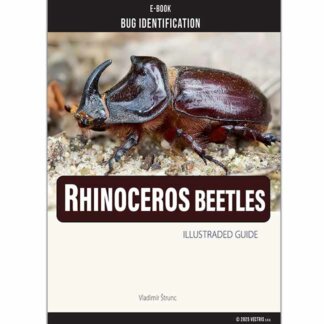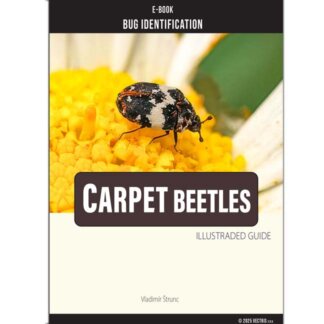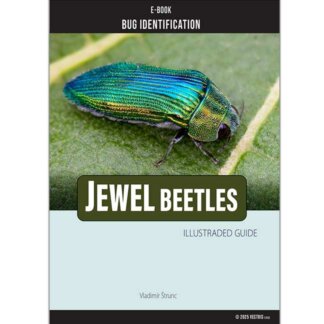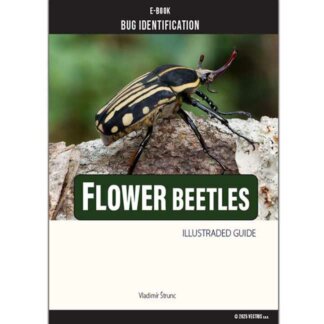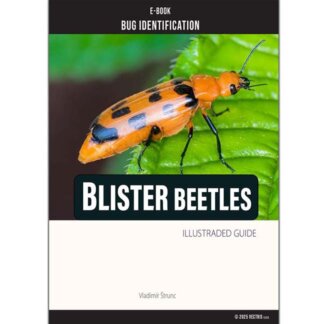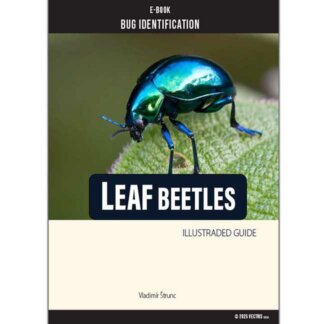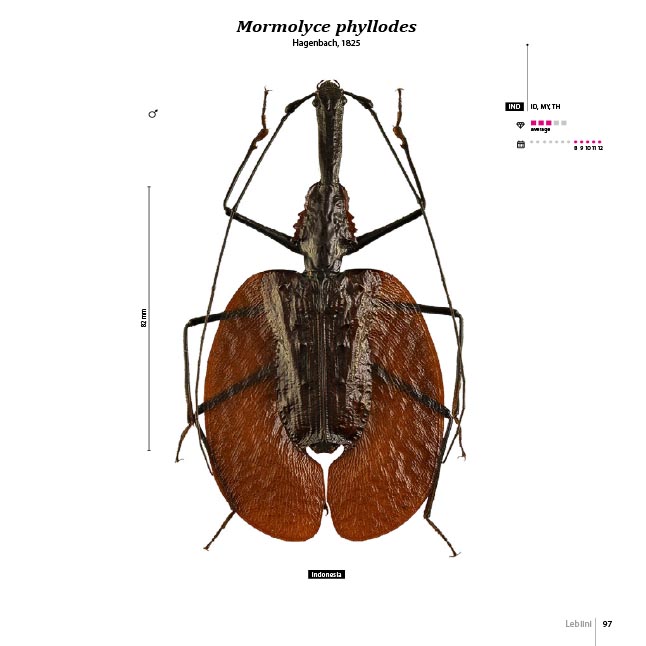Unique atlases with photos. Ground beetles, belonging to the family Carabidae, are a diverse group of insects that play a significant role in various ecosystems. With over 40,000 species identified globally, these beetles exhibit a wide range of morphological and behavioral adaptations that contribute to their ecological success. Book about Beetles
Are you a student or interested in entomology? Don’t miss the exclusive discounts offered by the author! Contact today for special pricing for students and entomologists – save money and support your curiosity and studies at the same time. Contact us now to take advantage of this opportunity! You will receive a reply promptly
Book novelties:
Prioninae of the World I., Cerambycidae of the Western Paleartic I. June Bugs,
Types of beetles insects
New E-Book: Ground Beetles, Tiger Beetles, Longhorn Beetles, Jewel Beetles, Stag Beetles, Carpet Beetles, Scarab Beetles, Rhinoceros Beetles, Weevil Beetles, Blister Beetles, Leaf Beetles, Flower Beetles,
Start Shopping, Start Saving – prices from $3 USD
Ground Beetle
We recommend:
jeweled beetles, ground beetles, longhorn beetles, goliath beetle, stag beetle, carpet beetles
Carabidae
-
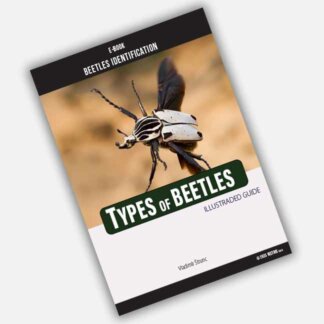 Types of beetles insects€ 13.00
Types of beetles insects€ 13.00 -
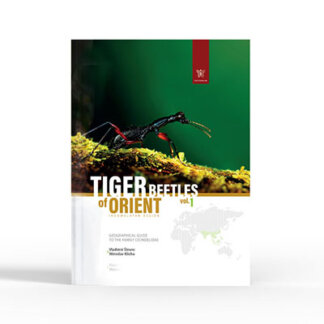 Tiger Beetles of Orient€ 129.00
Tiger Beetles of Orient€ 129.00 -
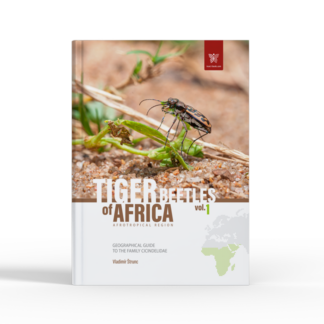 Tiger Beetles of Africa€ 129.00
Tiger Beetles of Africa€ 129.00 -
 The Prionids of the WorldSale Product on sale
The Prionids of the WorldSale Product on sale€ 65.00€ 59.00Rated 5.00 out of 5 based on 3 customer ratings -
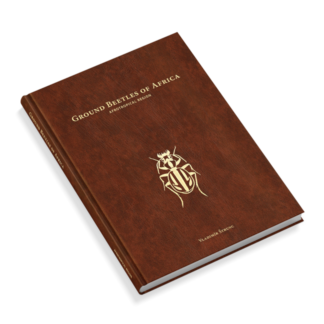 Ground Beetles of Africa (2nd edition)€ 136.00
Ground Beetles of Africa (2nd edition)€ 136.00 -
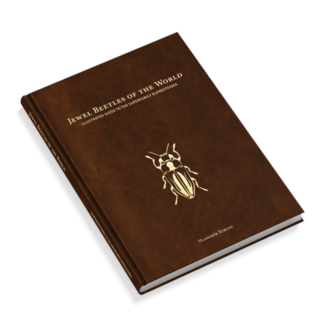 Jewel Beetles of the World€ 105.00
Jewel Beetles of the World€ 105.00 -
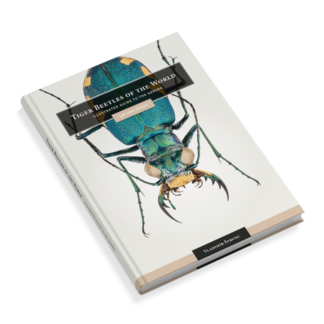 Tiger Beetles of the World€ 109.00Rated 5.00 out of 5 based on 6 customer ratings
Tiger Beetles of the World€ 109.00Rated 5.00 out of 5 based on 6 customer ratings -
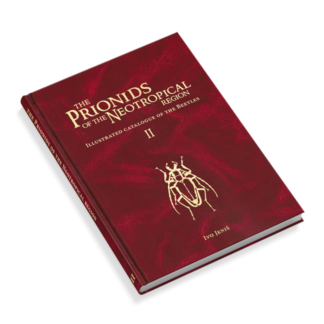 The Prionids of the Neotropical regionSale Product on sale
The Prionids of the Neotropical regionSale Product on sale€ 65.00€ 59.00Rated 5.00 out of 5 based on 1 customer rating
Unique pictorial atlases for identifying Beetles:
(2020) Tiger Beetles of the World, Cicindelidae, Illustrated guide to the genera
(2023) Tiger Beetles of Africa, Cicindelidae, Geographical guide to the family Cicindelidae
(2024) Tiger Beetles of Orient, Cicindelidae, Geographical guide to the family Cicindelidae
(2022) Ground Beetles of Africa, Afrotropical Region
(2022) Jewel Beetles of the World, Buprestidae, Illustrated guide to the Superfamily Buprestoidea
(2008) The Prionids of the World, Prioninae, Illustrated catalogue of the Beetles
(2010) The Prionids of the Neotropical region, Prioninae, Illustrated catalogue of the Beetles
Ground beetle
CARABIDAE
One of the defining characteristics of ground beetles is their predatory nature. They primarily feed on other insects, making them important biological control agents in agricultural settings. Studies have shown that ground beetles can reduce pest populations by as much as 50%, thereby decreasing the reliance on chemical pesticides and promoting sustainable farming practices.
Ground beetles are typically characterized by their elongated bodies, long legs, and distinctive mandibles. They are predominantly nocturnal, which allows them to evade predators and hunt for prey under the cover of darkness. Their coloration varies widely, ranging from metallic hues to dull browns and blacks, which aids in camouflage within their habitats.
These beetles are found in a variety of environments, including forests, grasslands, and agricultural fields. They thrive in moist, well-drained soils that provide ample cover and food sources. Ground beetles are also known for their ability to adapt to different climatic conditions, which has enabled them to inhabit regions from temperate zones to tropical forests.
Bug Posters, Insect Posters

family Carabidae
Reproductive strategies among ground beetles are diverse. Most species lay their eggs in the soil or under leaf litter, where the larvae can find immediate access to food. The larvae are voracious predators themselves, further contributing to the control of pest populations. The life cycle of ground beetles typically spans several weeks to months, depending on environmental conditions and species.
Research indicates that ground beetles can serve as bioindicators of ecosystem health. Their presence and diversity can reflect the quality of the habitat, as they are sensitive to changes in environmental conditions. Conservation efforts aimed at preserving natural habitats are crucial for maintaining ground beetle populations and, by extension, the ecological balance they help sustain.
In conclusion, ground beetles are not only fascinating creatures but also vital components of our ecosystems. Their role as predators, adaptability to various environments, and significance as bioindicators underscore the importance of understanding and conserving these insects. Continued research into their biology and ecology will enhance our ability to utilize their natural pest control capabilities effectively.
Ground Beetles Carabidae
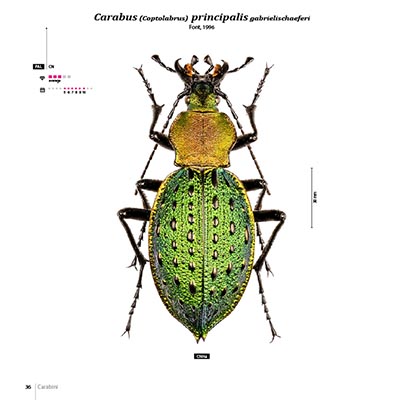
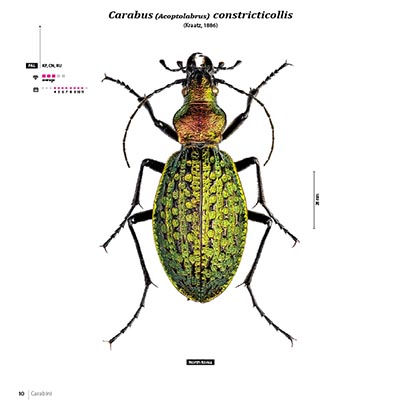
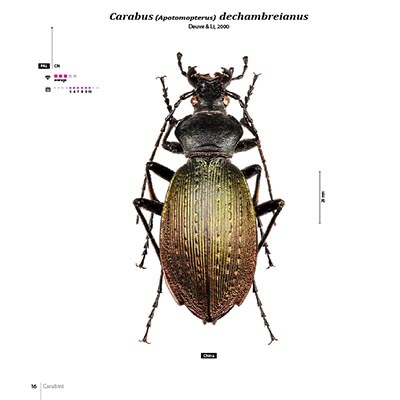
Family Carabidae Latreille, 1802
Subfamily Rhysodinae Laporte, 1840
-
Tribe Clinidiini R.T. Bell & J.R. Bell, 1978
-
Tribe Dhysorini R.T. Bell & J.R. Bell, 1978
-
Tribe Leoglymmiini R.T. Bell & J.R. Bell, 1978
-
Tribe Medisorini R.T. Bell & J.R. Bell, 1987
-
Tribe Omoglymmiini R.T. Bell & J.R. Bell, 1978
-
Tribe Rhysodini Laporte, 1840
-
Tribe Sloanoglymmiini R.T. Bell & J.R. Bell, 1991
Subfamily Nebriinae Laporte, 1834
-
Tribe Nebriini Laporte, 1834
-
Tribe Notiokasiini Kavanaugh & Negre, 1983
-
Tribe Notiophilini Motschulsky, 1850
-
Tribe Opisthiini Dupuis, 1912
-
Tribe Pelophilini Kavanaugh, 1996
Subfamily Carabinae Latreille, 1802
-
Tribe Carabini Latreille, 1802
-
Tribe Ceroglossini Lapouge, 1927
-
Tribe Cychrini Perty, 1830
-
Tribe Pamborini Hope, 1838
Subfamily Loricerinae Bonelli, 1810
Subfamily Omophroninae Bonelli, 1810
Subfamily Elaphrinae Latreille, 1802
Subfamily Migadopinae Chaudoir, 1861
-
Tribe Amarotypini Erwin, 1985
-
Tribe Migadopini Chaudoir, 1861
Subfamily Hiletinae Schiodte, 1847
Subfamily Scaritinae Bonelli, 1810
-
Tribe Carenini W.J. MacLeay, 1887
-
Tribe Clivinini Rafinesque, 1815
-
Tribe Dalyatini Mateu, 2002
-
Tribe Dyschiriini Kolbe, 1880
-
Tribe Forcipatorini Bänninger, 1938
-
Tribe Palaeoaxinidiini McKay, 1991†
-
Tribe Pasimachini Putzeys, 1867
-
Tribe Promecognathini J.L. LeConte, 1853
-
Tribe Salcediini Alluaud, 1930 (1929)
-
Tribe Scaritini Bonelli, 1810
Subfamily Broscinae Hope, 1838
-
Tribe Broscini Hope, 1838
Subfamily Apotominae J.L. LeConte, 1853
Subfamily Siagoninae Bonelli, 1813
-
Tribe Enceladini G.H. Horn, 1881
-
Tribe Lupercini Lecordier, 1977
-
Tribe Siagonini Bonelli, 1813
Subfamily Melaeninae Csiki, 1933
Subfamily Gehringiinae Darlington, 1933
-
Tribe Gehringiini Darlington, 1933
Subfamily Trechinae Bonelli, 1810 1313
-
Tribe Anillini Jeannel, 1937
-
Tribe Bembidarenini Maddison & Erwin, 2019
-
Tribe Bembidiini Stephens, 1827
-
Tribe Horologionini Jeannel, 1949
-
Tribe Lovriciini Giachino et al., 2011
-
Tribe Pogonini Laporte, 1834
-
Tribe Sinozolini Deuve, 1997
-
Tribe Tachyini Motschulsky, 1862
-
Tribe Trechini Bonelli, 1810
-
Tribe Zolini Sharp, 1886
Subfamily Patrobinae W. Kirby, 1837
-
Tribe Lissopogonini Zamotajlov, 2000
-
Tribe Patrobini W. Kirby, 1837
Subfamily Psydrinae J.L. LeConte, 1853
-
Tribe Moriomorphini Sloane, 1890 1414
-
Tribe Psydrini J.L. LeConte, 1853
Subfamily Nototylinae Bänninger, 1927
Subfamily Paussinae Latreille, 1806
-
Tribe Metriini J.L. LeConte, 1853
-
Tribe Microzaenini Deuve, 2020
-
Tribe Mystropomini G.H. Horn, 1881
-
Tribe Ozaenini Hope, 1838
-
Tribe Paussini Latreille, 1806
-
Tribe Protopaussini Gestro, 1892
Subfamily Cicindinae Csiki, 1927
Subfamily Brachininae Bonelli, 1810
-
Tribe Brachinini Bonelli, 1810
-
Tribe Crepidogastrini Jeannel, 1949
Subfamily Harpalinae Bonelli, 1810
-
Tribe Abacetini Chaudoir, 1873
-
Tribe Amorphomerini Sloane, 1923
-
Tribe Anthiini Bonelli, 1813
-
Tribe Atranini G.H. Horn, 1881 1818
-
Tribe Bascanini Basilewsky, 1953
-
Tribe Calophaenini Jeannel, 1948
-
Tribe Catapieseini H.W. Bates, 1882
-
Tribe Chaetodactylini Tschitschérine, 1903 H
-
Tribe Chaetogenyini Emden, 1958
-
Tribe Chlaeniini Brullé, 1834
-
Tribe Cnemalobini Germain, 1911
-
Tribe Corsyrini Ganglbauer, 1891
-
Tribe Cratocerini Lacordaire, 1854
-
Tribe Ctenodactylini Laporte, 1834 H
-
Tribe Cuneipectini Sloane, 1907
-
Tribe Cyclosomini Laporte, 1834
-
Tribe Dercylini Sloane, 1923
-
Tribe Drimostomatini Chaudoir, 1872
-
Tribe Dryptini Bonelli, 1810
-
Tribe Enoicini Basilewsky, 1985
-
Tribe Galeritini W. Kirby, 1825
-
Tribe Geobaenini Péringuey, 1896
-
Tribe Ginemini Ball & Shpeley, 2002
-
Tribe Glyptini G.H. Horn, 1881 H
-
Tribe Graphipterini Latreille, 1802
-
Tribe Harpalini Bonelli, 1810
-
Tribe Helluonini Hope, 1838
-
Tribe Hexagoniini G.H. Horn, 1881 (1834)
-
Tribe Idiomorphini H.W. Bates, 1891
-
Tribe Lachnophorini J.L. LeConte, 1853
-
Tribe Lebiini Bonelli, 1810
-
Tribe Licinini Bonelli, 1810 H
-
Tribe Masoreini Chaudoir, 1871
-
Tribe Melanchitonini Jeannel, 1948
-
Tribe Microcheilini Jeannel, 1948
-
Tribe Morionini Brullé, 1835
-
Tribe Odacanthini Laporte, 1834 1919
-
Tribe Omphreini Ganglbauer, 1891
-
Tribe Oodini LaFerté-Sénectere, 1851
-
Tribe Orthogoniini Schaum, 1857
-
Tribe Panagaeini Bonelli, 1810
-
Tribe Peleciini Chaudoir, 1880
-
Tribe Perigonini G.H. Horn, 1881 [NP]
-
Tribe Physocrotaphini Chaudoir, 1863
-
Tribe Platynini Bonelli, 1810
-
Tribe Pseudomorphini Hope, 1838
-
Tribe Pterostichini Bonelli, 1810
-
Tribe Sphodrini Laporte, 1834
-
Tribe Xenaroswellianini Erwin, 2007
-
Tribe Zabrini Bonelli, 1810
-
Tribe Zuphiini Bonelli, 1810
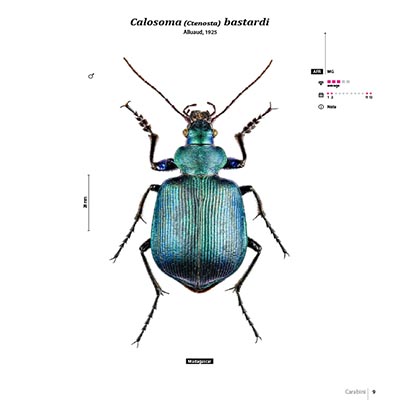
Ground Beetles: An Expanded Overview
Ground beetles (family Carabidae) represent one of the most diverse and ecologically significant groups of insects. With over 40,000 species globally, they play a vital role in ecosystems as predators and bioindictors.
Identification
Appearance: Typically dark-colored (black or brown), some species exhibit striking metallic hues (blue, green, orange, or copper). Their elongated, oval bodies are equipped with three pairs of legs and two pairs of wings, with the outer wings (elytra) serving as protective covers.
Size: Ranges from 2 mm to 25 mm.
Key Features: Prominent mandibles for predation, large eyes for nocturnal activity, thread-like antennae, and a tough exoskeleton. Some species have fused elytra, rendering them flightless.
Habitat
Ground beetles are highly adaptable and inhabit a wide range of environments:
Global Distribution: Found in forests, grasslands, agricultural fields, urban gardens, and tropical rainforests. They are absent only in deserts.
Preferred Locations: Commonly found under logs, rocks, leaves, soil cracks, or debris. Indoors, they may hide in damp areas but do not reproduce there.
Behavioral Preferences: Many species prefer clay soils over sandy ones and are active during the night.
Diet
Ground beetles are predominantly carnivorous but exhibit dietary flexibility:
Primary Prey: Aphids, caterpillars, maggots, slugs, worms, and other soil-dwelling organisms. Some species specialize in specific prey (e.g., Calosoma species focus on caterpillars).
Omnivorous Tendencies: Some consume seeds or plant material when prey is scarce. This behavior can aid in weed control by reducing seed populations.
Life Cycle
Ground beetles undergo complete metamorphosis:
Egg Stage: Eggs are laid individually in soil or on objects above ground.
Larval Stage: Caterpillar-like larvae with hard exoskeletons and large jaws develop in soil or debris.
Pupal Stage: Pupation occurs underground.
Adult Stage: Adults emerge after pupation and live 1–4 years. Some species overwinter as adults.
Behavior
Ground beetles are nocturnal hunters that rely on their speed to capture prey.
They are often attracted to artificial lights at night.
Defensive Behaviors: Some emit strong-smelling irritants when threatened.
Ecological Importance
Ground beetles provide numerous ecosystem services:
Pest Control: By preying on agricultural pests like caterpillars and aphids, they reduce the need for chemical pesticides.
Weed Management: Seed-eating species contribute to weed population control.
Bioindicators: Their presence reflects environmental health and changes in habitat quality.
Conservation Tips
To support ground beetle populations:
Minimize soil disturbance (e.g., reduce tillage).
Avoid broad-spectrum insecticides.
Provide refuges such as mulch or hedgerows for overwintering adults.
By fostering their habitats, gardeners and farmers can enhance natural pest control while promoting biodiversity.
-
 Tiger Beetles of Orient€ 129.00
Tiger Beetles of Orient€ 129.00 -
 Tiger Beetles of Africa€ 129.00
Tiger Beetles of Africa€ 129.00 -
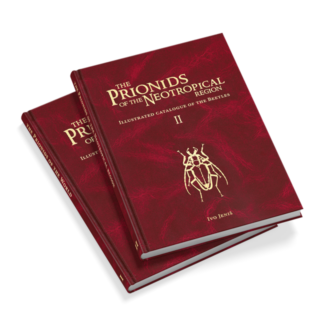 The Prionids Collection BundleSale Product on sale
The Prionids Collection BundleSale Product on sale€ 120.00€ 99.00 -
 Ground Beetles of Africa (2nd edition)€ 136.00
Ground Beetles of Africa (2nd edition)€ 136.00 -
 Jewel Beetles of the World€ 105.00
Jewel Beetles of the World€ 105.00 -
 Tiger Beetles of the World€ 109.00Rated 5.00 out of 5 based on 6 customer ratings
Tiger Beetles of the World€ 109.00Rated 5.00 out of 5 based on 6 customer ratings
